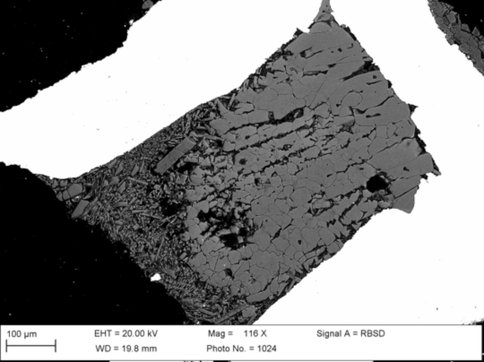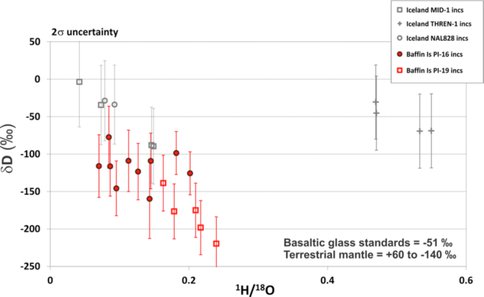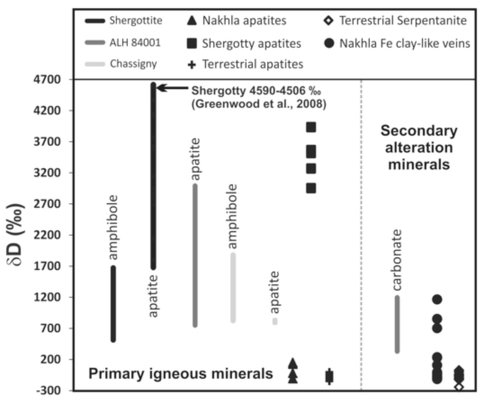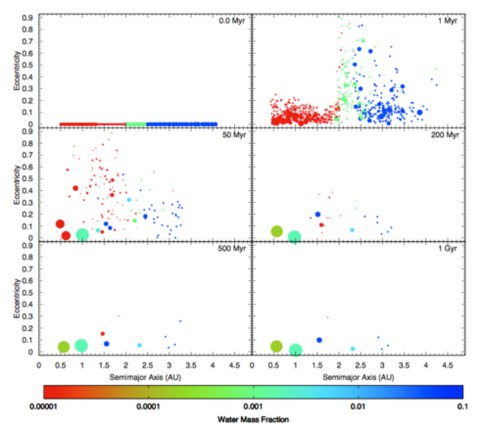2013 Annual Science Report
 University of Hawaii, Manoa
Reporting | SEP 2012 – AUG 2013
University of Hawaii, Manoa
Reporting | SEP 2012 – AUG 2013
Origin of Earth’s Water
Project Summary
Understanding the sources and delivery mechanisms of water to the Earth and the other terrestrial planets allows for the validation of planetary accretion models. This information can help us establish at what time the Earth contained sufficient water for the development of life. A key parameter in determining the source(s) of terrestrial planetary water is the hydrogen isotope composition of this water. However, hydrogen fractionation during surface and atmospheric processes on terrestrial planets such as Earth and Mars may have significantly changed the Deuterium/Hydrogen (D/H) ratio in the various water reservoirs. Therefore, to determine the primordial D/H ratio of these planets water we must find reservoirs that has been unaffected by surface processes. Plate tectonics is known to drag surface water down into the crust and the upper mantle, but the transition zone and lower mantle are thought to be uncontaminated by surface water. Therefore, we aimed to sample terrestrial hydrous minerals and melt inclusions sourced from these uncontaminated regions, such as deep mantle plume samples from Iceland and Baffin Island, along with possible deep mantle diamond inclusions. As plate tectonics never developed on Mars, the primary igneous hydrous minerals in martian meteroites were assumed to be isolated from martian surface processes. We analyzed the D/H ratio of these samples using the Cameca ims 1280 ionmicroprobe at the University of Hawaii to produce a dataset that establishes the primordial D/H ratio of Earth and Mars.
To gain insights into the amount of water present in terrestrial planetary mantle material we synthesized samples of high-pressure mineral phases that are likely hosts for H, and thus water, in planetary interiors. We measured the physical properties of these minerals, including crystal structure, density, elasticity, and electrical conductivity, to investigate the degree to which water may be incorporated into these minerals in the Earth’s mantle.
Models of terrestrial planet formation have been successful in producing terrestrial-class planets with sizes in the range of Venus and Earth. However, these models have generally failed to produce Mars-sized objects. The body that is usually formed around Mars’ semimajor axis is, in general, much more massive than Mars. We have developed new model for the formation of Mars in which a local depletion in the density of the protosolar nebula results in a non-uniform formation of embryos and ultimately the formation of Mars-sized planets.
Project Progress
Water in Nominally Anhydrous Mantle Minerals
Hydrogen in nominally anhydrous silicate minerals of planetary interiors has the potential to dominate the H budget of terrestrial planets. Because these minerals are oxygen minerals, this equates to water. In the Earth, we have previously demonstrated that the solubility of H in olivine increases with pressure to nearly one weight percent at 410 km depth, and that the amount of H in wadsleyite and ringwoodite (olivine polymorphs stable at 410 to 660 km depth) may vastly exceed the H in the planet’s ocean.
In the past year, we have focused on H solubility in the lower mantle phases, perovskite, majorite (garnet), and akimotoite (ilmenite), which are all polymorphs of MgSiO3. Synthesis of these phases is near the pressure limit of the tungsten carbide multianvil press. The MgSiO3-perovskite phase is thought to be the most abundant mineral in the Earth. The solubility of H in this phase may be con-trolled by its Al-content. Pure MgSiO3 perovskite appears to have very low H contents (<20 ppmw H2O by weight) when synthesized in equilibrium with an aqueous melt.
In 2012, we synthesized two samples MgSiO3 perovskite with ~2 weight percent Al2O3 at 24GPa and 2000°C. Electron microprobe chemical analysis indicated that Al substituted in the Si octahedral site but not in the Mg 8-coordinated site. Ion microprobe analysis indicated up to 4000 ppmw H2O, which is about one H per Al atom, consistent with H providing charge balance for the Al-for-Si substitution. Single-crystal X-ray showed an expansion of the octahedral site with Al substitution. However, Raman spectroscopy indicated the presence of brucite (Mg(OH)2) in the samples and high resolution SEM imaging indicated the presence of quenched melt inclusions in the size range 0.5 to 5 mm. These inclusions may have formed during the synthesis or on quench as they are ubiquitous throughout the perovskite crystals. In 2013, we synthesized perovskite in a hydrous Al-bearing composition at 25GPa and 2100°C near the pressure-temperature limit of the press. Although four experiments failed, one succeeded in producing crystals up to 100 mm in greatest dimension. Preliminary SEM examination does not show the presence of melt inclusions in this sample. We are in the process of SIMS analysis of the sample for H content.
Establishing the Source of Earth’s Water
There are two main ways of attempting to measure the D/H ratio of the transition zone and/or the lower mantle. The first is to analyze hydrous melt inclusions found within primitive mantle plume phenocrysts. Certain mantle plumes, such as those that formed the Hawaiian Islands, Ice-land, and Baffin Island, tap into a primitive deep mantle sources, and so D/H measurements of water in erupted lavas at these sites could give an accurate value for the Earth’s primordial water. However, lava degassing upon eruption and surface water contamination are difficult factors to avoid in these samples, and both processes could strongly affect the measured D/H ratio.
Our D/H measurements of melt inclusions within Hawaiian Deep Drill Core pillow basalts have shown that these samples are compromised by surface water. But our methodology is now perfected, and we have moved on to analyze different sample sets, specifically Baffin Island and Ice-landic basalts. Various Icelandic olivine separates and glasses have been donated to us by S. A. Hall-dórsson and D. R. Hilton at Scripps Institution of Oceanography, and Baffin Island samples have been donated to us by Prof. Don Francis of McGill University, Montreal. The Icelandic samples appear to have been contaminated by crustal material (as indicated by oxygen isotopic data), thus do not show a significant D/H ratio difference compared to our standard materials. In contrast, oxygen isotope data indicate the Baffin Island samples have not been contaminated by crustal material, and they contain significantly lower D/H ratios than typical terrestrial surface samples (Fig. 2). This data suggests the Baffin Island sample suite represent a primitive hydrogen isotope reservoir which is relatively unaffected by surface hydrogen.
The second way to attempt to measure the primordial terrestrial D/H ratio is to analyze hydrous primary mineral inclusions found in diamonds from the transition zone/deep mantle. The D/H ratio of these minerals would be extremely well protected from any surface water contamination or degassing because of their diamond casing. As long as the provenance of the diamond can be proved to be from the transition zone/deep mantle, and as long as the mineral inclusion formed at the same time as the diamond, the D/H ratios in these hydrous mineral inclusions will be incontestably primordial. We have now analysed the D/H ratio of phlogopite diamond inclusions from the Yakutian, as described in Sobolev et al. (2009, Russian Geol. Geophys.). We are currently processing the data from these measurements.
The D/H ratio of Mars
Mars does not recycle crustal materials via plate tectonics. For this reason the magmatic water reservoir of the martian mantle has not been affected by surface processes, and the deuterium/hydrogen (D/H) ratio of this water should represent the original primordial martian value. Following this logic, hydrous primary igneous minerals on the martian surface should also carry this primordial D/H ratio, assuming no assimilation of martian atmospheric water during crystallization and no major hydrogen fractionation during melt degasing. Hydrous primary igneous minerals, such as apatite and amphibole, are present in martian meteorites here on Earth.
We produced in-situ measurements of the D/H ratios in Nakhla apatite grains, using the Cameca ims 1280 ionmicroprobe at the University of Hawaii. The ratio of deuterium (2H or D) to hydrogen (1H) in water is commonly quoted relative to Vienna Standard Mean Ocean Water (VSMOW), and is given as δD = with units of per mil (‰). Hence, VSMOW has a δD value of 0 ‰. On Earth, ice and rocks have negative δD values. In contrast, Mars’ atmospheric hydrogen has a positive δD value, due to the preferential loss of the lighter hydrogen isotope to space (~+4200 ‰). Our measurements suggest this enrichment was subsequently incorporated into martian secondary alteration minerals, such as the Fe-rich clay-like deposits and carbonates found in the nakhltie martian meteorites. In contrast, the primary igneous mineral apatite contains similar D/H ratios to terrestrial ocean and sediment values, despite strong evidence that our samples were not significantly contaminated by terrestrial hydrogen. These results may suggest that water trapped in the martian mantle has a similar D/H to that of the Earth. Therefore, the water of these two planets appears to have originated from the same source material. The D/H ratios of the carbonaceous chondrite meteorites, and the Jupiter-family comet 103P/Hartley 2, are similar to the D/H of the two planets, making both these primitive inner solar system materials strong candidates for the source of the terrestrial planets water. These results support recent dynamical models of the formation of the solar system, which suggest material in the inner solar system was homogenized by the migration of Jupiter.
Our most recent research in this field has concentrated on the new Shergottite martian meteorite Tissint, which was seen to fall in Morocco in 2011. This meteorite is generally highly shocked, but some areas are more shocked than others. We aim to measure the D/H ratio in areas of high shock versus areas of lower shock to determine how high shock pressures change the D/H ratio.
A Successful Model for the Formation of Mars and the Origin of Earth’s Water
A major obstacle in developing a comprehensive model for the formation of the terrestrial planets of our solar system is the planet Mars. Despite more than two decades of efforts in explaining the formation of the inner solar system, and many sophisticated and high resolution computational simulations of the late stage of terrestrial planet formation, the formation of Mars is still a mystery. While modern simulations have been successful in producing a wide variety of terrestrial planets such as two to four planets in well-separated and stable orbits and have been able to account for the origin of Earth’s water and its accretion within the timescale consistent with radioactive chronometers, they have not been able to form a Mars analog. The body that is produced around the current Mars’ semi-major axis is, in general, too massive when compared to the mass of Mars. We have developed a new scenario for the formation of Mars in which a local depletion in the density of the protosolar nebula results in a non-uniform formation of embryos and ultimately the formation of Mars-sized planets. We have carried out extensive numerical simulations of the formation of terrestrial planets in such a disk for different scales of the local density depletion, and for different orbital configurations of giant planets. Our simulations point to the possibility of the formation of Mars-sized bodies around 1.5 AU, specifically when the scale of the disk local mass-depletion is moderately high (50-75%). In these systems, Mars analogs are formed from the pro-toplanetary materials that originate in the region of disk where there is no local mass-depletion. Results also indicate that Earth-sized planets can form around 1 AU with substantial amount of water.
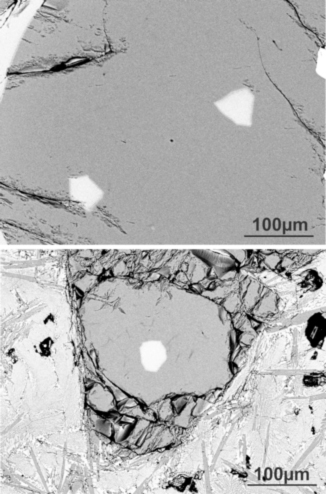
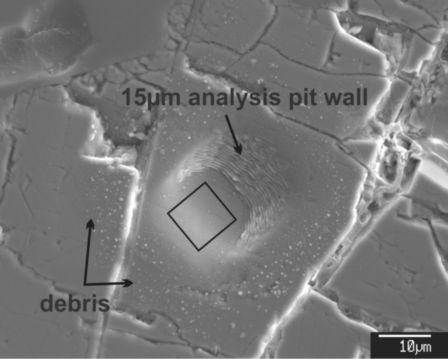
Publications
-
Hallis, L. J., Taylor, G. J., Nagashima, K., Huss, G. R., Needham, A. W., Grady, M. M., & Franchi, I. A. (2012). Hydrogen isotope analyses of alteration phases in the nakhlite martian meteorites. Geochimica et Cosmochimica Acta, 97, 105–119. doi:10.1016/j.gca.2012.08.017
-
Izidoro, A., De Souza Torres, K., Winter, O. C., & Haghighipour, N. (2013). A COMPOUND MODEL FOR THE ORIGIN OF EARTH’S WATER. The Astrophysical Journal, 767(1), 54. doi:10.1088/0004-637x/767/1/54
-
Izidoro, A., Haghighipour, N., Winter, O. C., & Tsuchida, M. (2014). TERRESTRIAL PLANET FORMATION IN A PROTOPLANETARY DISK WITH A LOCAL MASS DEPLETION: A SUCCESSFUL SCENARIO FOR THE FORMATION OF MARS. The Astrophysical Journal, 782(1), 31. doi:10.1088/0004-637x/782/1/31
-
PROJECT INVESTIGATORS:
-
PROJECT MEMBERS:
Lydia Hallis
Project Investigator
Nader Haghighipour
Co-Investigator
Gary Huss
Co-Investigator
Andre Izidoro
Co-Investigator
Karen Meech
Co-Investigator
Jeff Taylor
Co-Investigator
Othon Winter
Co-Investigator
Ian Franchi
Collaborator
Monica Grady
Collaborator
Monica Grady
Collaborator
Kazuhide Nagashima
Collaborator
A. Needham
Collaborator
Caroline Smith
Collaborator
Joseph Smyth
Collaborator
-
RELATED OBJECTIVES:
Objective 1.1
Formation and evolution of habitable planets.
Objective 4.1
Earth's early biosphere.
